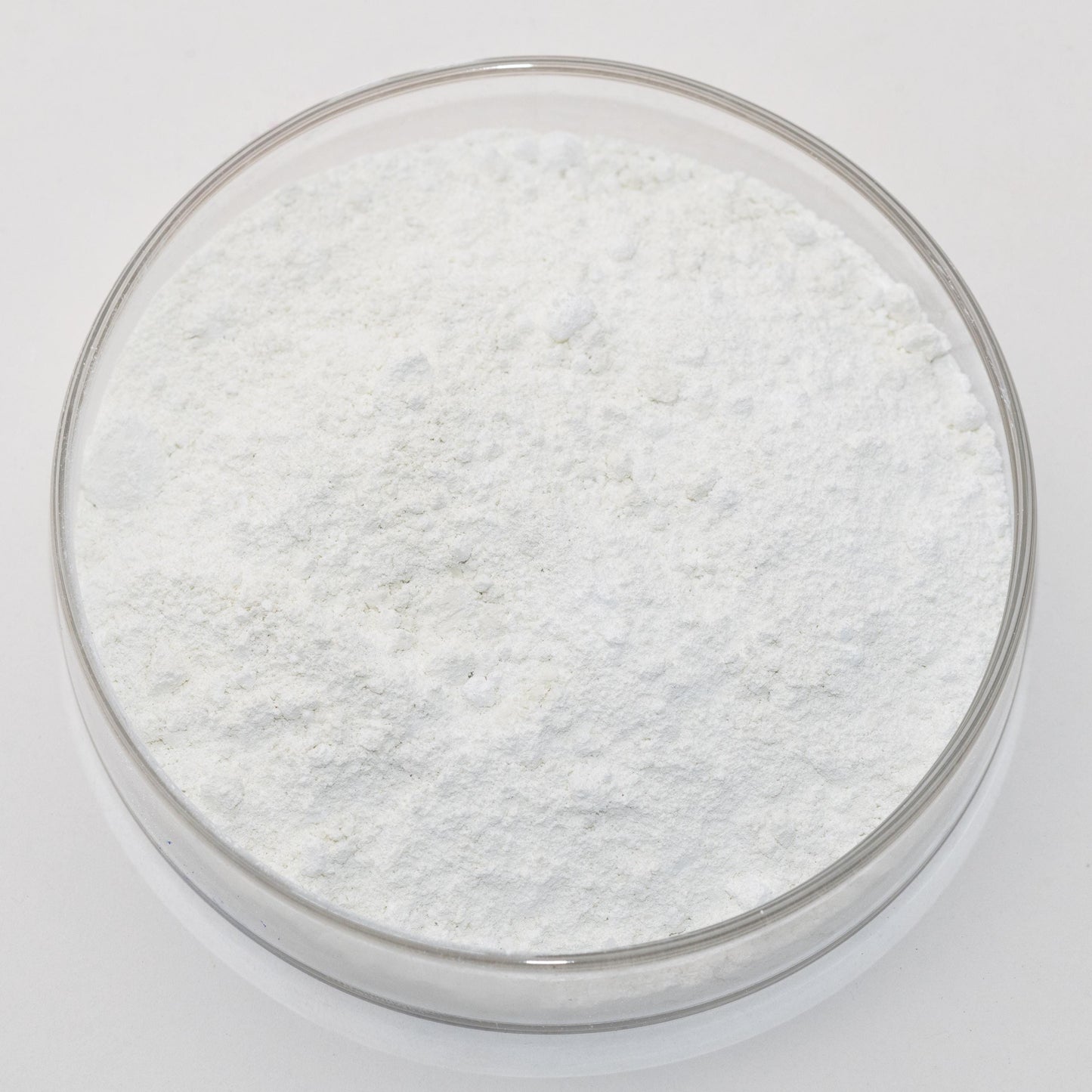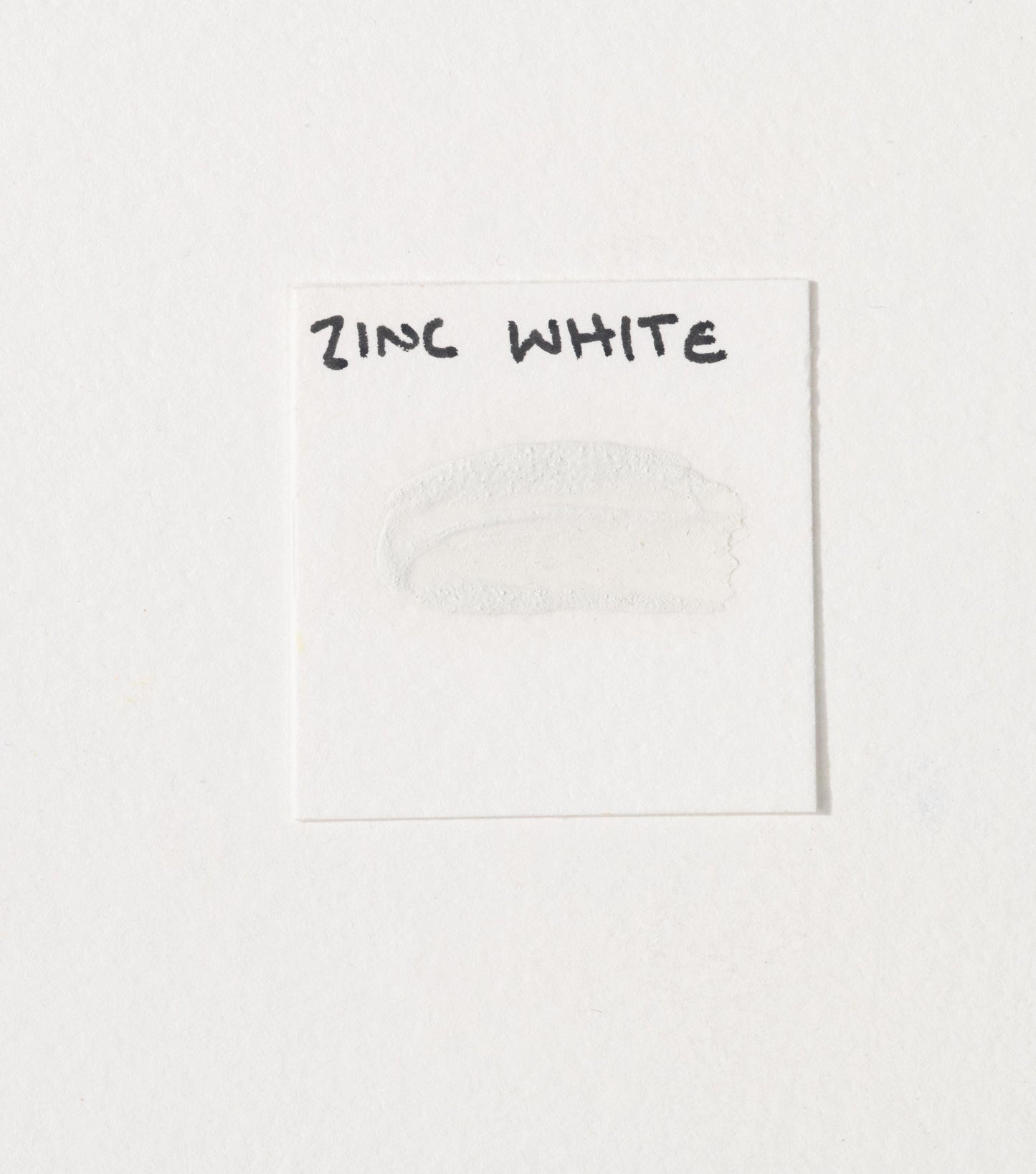Zinc White
Zinc White
Couldn't load pickup availability
Share



Description
Zinc White is a handmade natural single-pigment white, originally developed in the 18th century as a less toxic alternative to Lead White. It is composed of zinc oxide (ZnO), a naturally occurring mineral that, when processed, produces a brilliant, cool-toned white pigment. Unlike Lead White or Titanium White, Zinc White is known for its transparency, making it ideal for glazing, subtle highlights, and mixing without overpowering other colors.
Zinc White produces a delicate, cool white with lower tinting strength than Titanium White, allowing for more nuanced color blending. It is slow drying in oil paints, making it suitable for extended blending and soft transitions. Unlike other whites, it forms a more brittle paint film, which is why it is often mixed with other whites for added durability. It is widely used in watercolor, oil, acrylic, and tempera for its luminous and subtle qualities.
History
Zinc White was first introduced as a pigment in the 1780s but gained widespread adoption in the 19th century when it became commercially available as a safer alternative to Lead White. By the mid-19th century, it was commonly used in oil painting and was favored by artists who sought a cleaner, less reactive white.
During the 19th and early 20th centuries, Zinc White became a standard in artists’ palettes, particularly for watercolor and oil painters. It was often used in portrait painting due to its ability to create soft skin tones without overpowering the mix. However, in oil painting, its brittle nature led to concerns about cracking, which resulted in it often being combined with stronger binders or other whites, such as Titanium or Lead White. In the pictured artwork 'A Wheatfield with Cypresses' by Van Gogh, zinc white is used throughout to create soft clouds and various tints.
Today, Zinc White remains an important pigment in modern art, often used in conservators' work and in mixtures to enhance transparency and luminosity. While it has been somewhat replaced by Titanium White for general use, its unique properties make it an essential choice for artists who need a subtle, cool, and transparent white.
Health and Safety
Precautions:
Keep out of reach of children and pets.
Do not consume.
Not for cosmetic or food usage.
Do not spray apply.
For further health information, contact a poison control center.
Use care when handling dry pigments and avoid dust formation.
Do not eat, drink, or smoke near dry pigments. Avoid breathing in pigment dust and use a NIOSH-certified dust respirator with a sufficient rating for dry pigment.
Wash hands immediately after use or handling.
If dust is likely, always wear protective clothing to keep out of eyes, lungs, and off skin, and keep the area ventilated.
This product may contain chemicals known by the State of California to cause cancer, birth defects, or reproductive harm.
Warnings and bottle information are abbreviated.
Pigment Information
Pigment Type: Synthetic inorganic pigment, zinc oxide (ZnO)
Suitable Mediums: Watercolor, Oil, Tempera, Acrylic
Lightfastness: Best (Highly stable and resistant to fading)
Opacity: Semi-transparent
Other Names: Chinese White, Zinc Oxide White
Color Index Code: PW4
Image: 'A Wheatfield with Cypresses' by Van Gogh from the National Gallery



